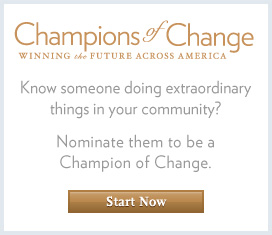Champions of Change Blog
West Oakland Environmental Indicators Project: Citizen Engagement to Measure and Improve Air Quality
Posted by on June 26, 2013 at 5:59 PM EDT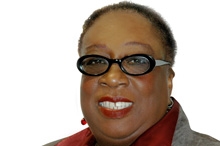
Margaret Gordon is being honored as a Champion of Change for her dedication to increasing public engagement in science and science literacy.
I co-founded, along with Brian Beveridge, the West Oakland Environmental Indicators Project (WOEIP), a resident-led, community-based environmental justice organization that has been a strong voice of reason in the West Oakland community over the last decade. Due to the significant truck traffic needed to move goods through the Port of Oakland, which is located in a high population area of West Oakland, outdoor air quality is very poor and has a significant impact on the overall health of community residents. Using research and data collection as tools, WOEIP advocates for an improved quality of life, as it relates to public health, air quality, land-use and equity development.
The West Oakland Environmental Indicators Project studied a number of factors that have negative impacts on air quality in the community, such as the volume of trucks coming into the neighborhood and illegal dumping, and as a result, community members identified 17 high-priority items for further action. Results were published in two Community Based Participatory Research reports, "Neighborhood Knowledge for Change" and "Reducing Diesel Pollution in West Oakland". WOEIP uses science research to help convince policymakers that environmental changes are needed to decrease diesel particulate pollution originating from the Port of Oakland.
More recently, WOEIP has partnered with Intel and Common Sense Science to collect air quality data using handheld devices designed by researchers at the University of California-Berkeley Intel Labs. WOEIP is recruiting neighbors and youth into the ‘Personal Air Monitoring Project,’ a new study that uses these portable sensors to collect both GPS information and data on particulate matter (PM) in air. By deploying these devices, WOEIP provides hands-on training to affected residents, allowing them to not only participate in problem-solving but also empowering the citizens to realize that they have ownership of the data. "Unlike elevated, rooftop stationary sensors, portable PM loggers record what residents breathe at ground level, near places (i.e. residential areas, schools, and parks) frequently traveled by the elderly and children." WOEIP’s research results have captured national attention - Congresswoman Barbara Lee and U.S. Environmental Protection Agency Administrator Lisa Jackson visited WOEIP for a presentation on their preliminary results.
We are seeking funding to bring our air quality data-gathering process indoors. We want to engage our local schools in assessing air pollution inside school buildings and use that information to help reduce asthma triggers in the classroom. Our ultimate goal is to empower parents to address indoor air quality issues in the home by helping families understand the structural and behavioral factors that link outdoor and indoor air quality.
Margaret Gordon is Co-founder and Co-director of the West Oakland Environmental Indicators Project (EIP).
Learn more about ServiceBackyard Brains – Gear for D.I.Y. Neuroscientists!
Posted by on June 25, 2013 at 11:51 AM EDT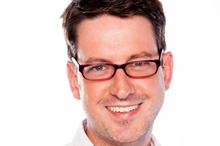
Gregory Gage is being honored as a Champion of Change for his dedication to increasing public engagement in science and science literacy.
Science has a rich history of everyday citizens assisting in great discoveries, and I am honored that our work to encourage amateur neuroscience has been selected by The White House for the Citizen Science Champion of Change award. We know a lot about how our amazing brain works, but there is much, much more that remains to be discovered. In fact, we have no cures and only insufficient treatments for neurological disorder, even though about 1 out of every 5 people will be diagnosed with a brain disease. Change is indeed needed in our nation’s approach to science education to bring more focus on neuroscience.
I am a “DIY” neuroscientist. I co-founded a low-fi company called Backyard Brains with my grad-school labmate, Tim Marzullo. While working on our Ph.D., we would often go out to local public schools to talk about the importance of studying neuroscience. We developed our lesson plans using models and analogies about how the brain works, but what we really wanted to teach the students was “electrophysiology”... as this is truly is how the brain works.
The brain is an electrical organ, and the cells (neurons) communicate with “spikes”: a brief pulse of electricity. In my research at the university, I would record these spikes to learn what the neurons were telling us about how the brain worked. Traditionally, to do experiments with electrophysiology, one needs to be in a Ph.D. program and use expensive equipment (our electrophysiology rig cost $40,000). To make this accessible for our outreach goals, Tim and I set out on a self-imposed engineering challenge: to reduce this equipment down to the basic components, and record a spike for <$100. Less than a year later, we got our first prototype to work and were able to bring spikes into the classrooms! After getting requests from colleagues and teachers, we launched Backyard Brains. We are now a growing education company with neuroscience gear in over 45 countries on all 7 continents!
The goal of our company is to make low-cost, easy-to-use versions of the many neuroscience tools that we used at university. We also want to make it easy for amateurs to learn how to use the tools for research. By partnering with teachers and artists, we have created lesson plans and guides for dozens of experiments. Each experiment demonstrates one basic principle about how the brain works, and we leave the experiments open-ended for students to explore and discover new things. From “spikes” to “cyborgs” to “neuroprosthetics”, there is an experiment of interest for everyone!
Understanding the brain remains a great challenge, both to professional neuroscientists and the general public alike. By increasing the public’s understanding of neuroscience and creating a community of amateur neuroscientists, we hope to encourage public participation into the fascinating field of neuroscience.
Gregory Gage is the Co-Founder of a DIY Neuroscience.
Learn more about ServiceCitizen Scientists and Monarch Butterflies
Posted by on June 25, 2013 at 11:48 AM EDT
Karen Oberhauser is being honored as a Champion of Change for her dedication to increasing public engagement in science and science literacy.
When I think of citizen science, I think of points of enlightenment spreading over a map, literally filling it with new knowledge. Each point represents a person who is making an important contribution to science, who is learning a lot, and who is likely to be engaged in conserving the phenomenon they’re studying.
I founded and direct the Monarch Larva Monitoring Project (MLMP, www.mlmp.org), one of several citizen science projects focused on monarch butterflies. This 16-year-old project engages participants in collecting data that help us document monarch distribution and abundance in North America. The intense efforts of MLMP volunteers exemplify a term coined by Ralph Hames, who described volunteers in the Cornell Lab of Ornithology’s Birds in Forested Landscapes project as “super citizen scientists.” MLMP volunteers assess monarch density for up to 15 weeks per year (or more in the southern US) using a protocol that can take more than an hour per week. They observe up to several hundred monarch host plants (milkweeds), often collect eggs and caterpillars to rear for a parasite study, and record data on flowering plants at their site. While it’s an honor to know that hundreds of people are donating so much time to this work, it brings with it great responsibility. I am keenly aware of the incredible value of these “donated data”, and the hours contributed by citizen scientists, often in lovely settings, but often too in hot weather, sometimes surrounded by mosquitoes, wood ticks, or poison ivy. My responsibility to MLMP volunteers is to help ensure that the scientific, educational, and conservation potential of their data is realized.
From a scientific perspective, citizen science provides an efficient way to increase the geographic scale of data collection, while at the same time providing fine-scale data, often literally from people’s back yards. Because citizen science projects often involve sampling locations across a wide range of environmental variation, they can answer questions that can’t be addressed by traditional university or public-agency research groups. And their data are being used. In a preliminary analysis of the published literature on monarch butterflies, my colleague Leslie Ries at the University of Maryland found that almost 100% of the papers published since 1990 on monarch population dynamics, 50% of the papers on monarch migration and movement, and 10% of the papers on natural enemies used citizen science data. One of those natural enemies papers was based on questions asked by MLMP volunteer Ilse Gebhard in Michigan, who, along with fellow volunteers (and paper co-authors) Charlie Cameron in North Carolina and Suzanne Oberhauser in Wisconsin, has raised thousands of monarch caterpillars to document parasitism by a particularly interesting parasitoid fly named Lespisia archippivora. That’s the power of citizen science.
We know that citizen science has major educational benefits. Citizen scientists increase their understanding of science concepts, their engagement and interest in research, and their science-related skills. My University of Minnesota Extension colleagues and I are working on a project called Driven to Discover, using citizen science programs focused on birds and monarchs as springboards for youth research. Through Driven to Discover, adult leaders and youth teams from Minnesota, Virginia, Wisconsin, and Ohio are engaged in exciting research, helping us build a model that will lead the field of citizen science in exciting new directions. Driven to Discover participant Josh Proehl built on his work on the MLMP and another monarch citizen science project (Project Monarch Health) to conduct independent research on a monarch disease called Ophryocystis elecktrochirra, or OE for short. This was the summer after he was in 5th grade, and his main tools were a forceps, scotch tape, and a microscope that his teacher Laura Molenaar borrowed from the local High School in New London, Minnesota. The next summer, he attended an international meeting of monarch biologists and citizen scientists, where I introduced him to the world’s expert on OE and director of Project Monarch Health, Dr. Sonia Altizer from the University of Georgia. Sonia and Josh talked as colleagues about the effects and transmission of this disease. The next summer, Josh enlisted his little sister Jenna in his research, and they continued to study OE. That’s the power of citizen science.
I’ve called citizen scientists an “army for conservation” for many reasons; they collect data with conservation applications; they often become stewards for local habitats; and they reach out to others about the importance of conservation. It’s imperative that citizen science doesn’t become just another tool for documenting the demise of the natural world. It can be profoundly depressing to document how bird, butterfly, and native plant populations are declining in the face of human impacts. But, only by understanding these changes and their causes do we have any chance of addressing them. On large scales, we use citizen science data to make decisions about what habitats to protect and how to best restore habitats that support biodiversity. Citizen scientists, whose work has led to strong connections with the natural world, urge our elected leaders to protect land, reduce greenhouse gas emissions that are leading to a changing climate, and address the onslaught of invasive species that are out-competing, consuming, and causing diseases in native species. On smaller, but extremely important scales, citizen scientists work to preserve monarchs and their habitat; MLMP volunteers have changed the location of planned parking lots that would destroy the milkweed patch they’ve been studying, planted host plants for monarchs in their gardens and between their farm fields, and created natural habitat in locations ranging from schoolyards to corporate centers to local parks.
Aldo Leopold once said: “One of the penalties of an ecological education is that one lives alone in a world of wounds. Much of the damage inflicted on land is quite invisible to laymen.” Citizen science not only makes these wounds visible to many more people, but it can help to heal them. That is the power of citizen science.
Karen Oberhauser is a Professor in the Department of Fisheries, Wildlife and Conservation Biology at the University of Minnesota
Learn more about ServiceCSI: NY - Citizen Science Investigations in New York City
Posted by on June 25, 2013 at 11:42 AM EDT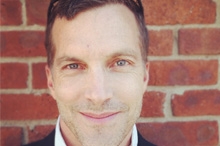
John Rowden is being honored as a Champion of Change for his dedication to increasing public engagement in science and science literacy.
"Mister, I hate birds." With those words, my relationship with Stacy began. Stacy was a student at a Bronx satellite high school that offers the opportunity for students who have not succeeded in other schools to get a diploma. From her seen-it-all attitude and the way she fixed me with an appraising look as she walked into our first session, it was clear that Stacy had one thing on her mind: getting to graduation, and I surmised that selling her on a citizen science project about birds wasn’t going to be an easy job.
My work with Stacy and her classmates was part of my Toyota TogetherGreen conservation leadership fellowship from the National Audubon Society. I had been chosen with others from around the country to complete conservation action projects in our communities. One of the stated goals of the program is to engage diverse audiences in conservation, and the focus of my project was to expand the reach of New York City Audubon’s citizen science program, both geographically and demographically. So I was spending one day a week in the Bronx with this group of students who came in not knowing or caring anything about the subject. I’ve been studying birds almost as long as some of these students had been alive, and wondered whether I could get them to feel my passion for birds and science.
Citizen science offers a unique opportunity to involve people in real scientific research and can have enormous benefits: greatly expanding the ability of scientists to collect data, creating a more scientifically literate population, and allowing people to better understand their role in protecting nature. During my fellowship I worked with the students to teach them bird identification, survey techniques, and rigorous data collection. Although our monitoring area along the Bronx River included a scrap metal yard and several combined sewer outflow pipes, our monitoring excursions offered a surprising respite from the urban surroundings. We saw Brant geese hanging south before their journey to the Arctic, belted kingfishers flying back and forth across the river staking out territories, and flycatchers making their acrobatic sorties in search of insects. The students began to appreciate that birds were more than just pigeons they encountered scraping by in the city. And the data they contributed gave us valuable insight into bird populations in an area that was under-represented in our database.
By June the students were anxious to finish the year and get on to graduation. When I checked in with Stacy the last week (as I did every week) about how she felt about birds, she said she thought they were “kind of cool.” I didn't make the students into a bunch of avid birders but I do believe they'll think a little differently about their relationship to science, appreciate birds a little more, and know that they made a difference. Citizen science can do that.
I recently moved from NYC Audubon to National Audubon where I manage the national Toyota TogetherGreen grants program and evaluation of conservation results. Citizen science is a key component of Audubon’s efforts to impact conservation across the country and I continue to champion its use as a tool for positive change in communities.
John Rowden is the Toyota TogetherGreen research and grants manager for the National Audubon Society.
Learn more about ServiceBioCurious – a Hackerspace for Biology!
Posted by on June 25, 2013 at 11:37 AM EDT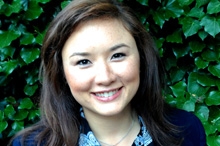
Eri Gentry is being honored as a Champion of Change for her dedication to increasing public engagement in science and science literacy.
One of the biggest challenges I’ve faced is how to become involved in science as a non-scientist. When I was little, I wanted to be a scientist. The evidence? A self-portrait done by a seven year-old me in an array of colored pencil: me in a lab coat and enormous, round glasses, with the word SCIENTIST, in deliberate seven year-old caps, underneath.
When I was 11, officially middle-school age, I wanted to be a stockbroker, a writer, an inventor, and an actress. Oh yeah, a scientist, too. I grew up in what I call a “small, poor, prison town in the middle of the desert.” It’s the kind of place that doesn’t always put opportunities in front of you, but it’s also the kind of place that lets you run wild with dreams.
In college, I remember choosing Economics over Biology as a major because “I wanted to be social.” Along the way, I had gotten the now funny impression that scientists worked alone, in dark places, from the only scientist I’d met in my life – a high school Physics teacher who started the first class by telling us she was there to teach underprivileged kids.
Shortly after entering the working world, where I no longer had access to classes, labs, or professors, I realized I wanted to do science, not finance. The problem was that there was essentially no way for me to do that. I eventually found a small, non-profit biotech lab, SENS, that took me in as a volunteer. At SENS, scientists were working around the clock with a passion and intensity I had never before seen to cure diseases of aging – to save people’s lives. I may not have known how I could help, but I knew this was the place I wanted to be. The place where I was fulfilled.
Through volunteering, I ended up cofounding a non-profit cancer research lab, Livly, with the Director of Research at SENS, after a colleague of ours died from esophageal cancer, unable to even try an experimental treatment in the states. We worked on improving the metrics around the experimental treatment he might have gotten in the only place we could afford: our Mountain View, CA garage, an amalgam of self-built tools and equipment bought on eBay and scavenged at big pharma liquidation sales.
Not content with working alone in our garage, I started holding DIYbio-themed meetups at my house in 2009, which anyone with any interest whatsoever in science could attend. Chemists, artist, software developers, tech entrepreneurs, and even some original Homebrew Computer Club members attended the meetups, and they quickly grew out of our house and into the local hackerspace, Hacker Dojo, which allowed community members to hold events in their large space.
Talking to the folks who attended my meetups, I found that they, too, had discovered a passion for science later in life and didn’t know how to get pursue it without giving up their jobs and/or negatively impacting their families. Their needs were almost always the same: they needed access to equipment, a place to work, more education, and people. When I thought of how to fill their needs, Hacker Dojo came to mind, a place people congregated to work, to socialize, to “meet cofounders of companies they didn’t even know they wanted to start,” as Founding Director, David Weekly puts it.
A hackerspace devoted to biology had never been attempted before, but wasn’t that likely because people stopped getting exposed to science outside of academia? What if the former could help fix the latter, I wondered. The climate is right: tools are inexpensive (enough), people are interested in DIY science, and a modification of the hackerspace model would work to fill people’s needs. It all made sense, and it felt like a mission that had to be accomplished, so I joined forces with five “biohacker” friends to start BioCurious, the world’s first hackerspace for biology.
We used the then brand-new Kickstarter crowdfunding platform to raise money and, with hundreds of backers from around the world, and hundreds more meetup members, we opened a 2600 square foot laboratory in Sunnyvale, CA that is open 7 days a week and lets anyone, at any level join for $100 a month. We have biotech classes, community projects, public science safety classes, glowing algae, scrappy entrepreneurs, and six year-old geneticists. BioCurious is completely volunteer-run and member supported. Many said it wouldn’t work. It doesn’t simply work – it thrives. Innovative strategies for science are ideated and attempted every day, and it wouldn’t be possible without a community lab to serve as stepping-stone between academia and home life. We may be the first hackerspace for biology, but that’s just the beginning. People write to BioCurious from around the globe asking for advice on how to start their own biohackerspaces. It makes me wonder, what would the world look like with a community lab in every neighborhood?
Eri Gentry is the Founding President of BioCurious and past CEO of Livly.
Learn more about ServiceTarget Asteroids! Citizen Science: Tracking Near-Earth Asteroids for Science and Humanity
Posted by on June 25, 2013 at 11:23 AM EDT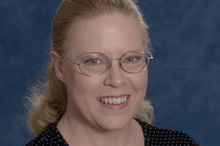
Dolores Hill is being honored as a Champion of Change for her dedication to increasing public engagement in science and science literacy.
I am honored to be selected a White House Citizen Science Champion of Change to represent Target Asteroids!, a decade long program that expands the role of citizen scientists in cutting edge asteroid research and serves as a model for other scientist-citizen scientist collaborations. It is our vision that Target Asteroids!, NASA’s OSIRIS-REx mission citizen science program, will encourage more amateur astronomers to become citizen scientists to track near-Earth asteroids and support spacecraft missions to asteroids with their observations.
Target Asteroids! builds on the tremendous foundations of amateur astronomy – throughout history, amateur and professional astronomers have made exciting discoveries, collaborated to learn more about the cosmos, and teamed up to provide details about the Solar System. This project puts citizen scientists front and center in the efforts to learn more about asteroids and protect our planet. Citizen scientists provide valuable data to help planetary scientists characterize near-Earth asteroids and understand the process by which Main Belt asteroids may become near-Earth asteroids; essential steps to ascertaining the risk of impact with Earth that may affect the world’s inhabitants. I was inspired to establish a “Target Asteroids! list by the historical contributions of amateur astronomers and my own citizen science experiences.
NASA’s OSIRIS-REx mission, led by Dante Lauretta (University of Arizona), is our country’s first asteroid sample return mission. It will launch in 2016, rendezvous with near-Earth asteroid (101955) Bennu in 2018 and return a sample to Earth in 2023. OSIRIS-REx is an acronym for Origins Spectral Interpretation Resource Identification Security-Regolith Explorer. OSIRIS-REx and its Target Asteroids! citizen science embody a perfect melding of astronomical asteroid science and hands-on meteoritics that seeks to understand our origins, evolution of the Solar System, ground truth between Earth-based telescope observations and laboratory studies, and secure the future of humanity by examination of orbital dynamics, physical properties, and composition of a potentially hazardous asteroid. It will be another important step toward understanding the more than 625,000 known asteroids especially near-Earth asteroids. And amateur astronomer citizen scientists can be a part of it!
Target Asteroids! co-lead and OSIRIS-REx mission asteroid astronomer, Carl Hergenrother, selects asteroids for the Target Asteroids! list that are mostly dark carbon-rich near-Earth asteroids easily accessible by sample return spacecraft or are analogs to Bennu. Amateur astronomer citizen scientists make valuable observations whenever they are able and submit them via the internet. They have the expertise and instrumentation to provide images, astrometric (position), and photometric (brightness) data for asteroids. They have a broad geographical distribution and are able to observe more often than professional astronomers. Many observations combined over a wide range of asteroid orbital positions allow scientists to increase knowledge of the near-Earth asteroid population overall and Bennu, specifically.
Even in its first year, Target Asteroids! citizen science program has already proven to be a highly successful collaboration. We far exceeded our expectations with 138 participants from beginners to expert observers from 26 countries and 25 states who have submitted 82 observations of 17 NEAs in the first year of this decade long program. In addition, 9 Target Asteroids! partners bring special expertise to support the program and leverage both NASA and private resources. OSIRIS-REx citizen science collaboration is one step in the right direction toward STEM-related activities and learning for citizens both in and out of school; yet another way that OSIRIS-REx Secures Our Future. Scientific inquiry and the threat of asteroid impact know no geographical boundaries. The benefits of the Target Asteroids! citizen science program extend to all of humanity, now, and in the future.
Happily, I have enjoyed the support of many in my scientific endeavors: from my first look through a telescope to years of laboratory research on meteorites. My message to scientists is: recall your early days when someone gave you the opportunity to participate in your first science project. It was exhilarating; right? You might be coaching a scientist-in-training or helping a member of the public understand how science is conducted. Citizen scientists are excited to contribute to your program, interact with and learn from you. To citizen scientists: you are valued, enthusiastic and dedicated partners whose observations and data enable science to progress. You are one important part of the whole community of science; together we can be more than the sum of the parts.
Dolores Hill is a Meteoriticist and Co-Lead of Target Asteroids!.
Learn more about Service
- &lsaquo previous
- …
- 51
- 52
- 53
- 54
- 55
- 56
- 57
- 58
- 59
- …
- next &rsaquo

